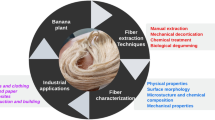Abstract
With an aim to effectively shorten the ageing period and reduce process cost, a nanogold photocatalyzed process was developed. This process successfully accelerated maturity of young sorghum spirit less than 120 min at ambient temperature. Process parameters relevant to process design were determined to be (1) the amount of acetic acid (≥1.53 g/100 ml); (2) an operation temperature ≤37°C; (3) a degree of mineralization ≤4.87%. Kinetic analysis indicated that to cautiously control dissolved oxygen (DO) to facilitate optimum production of hydroxyl free radical [-OH] could be a crucial step, while the kinetic equations elucidated to indicate production of ethyl acetate and acetic acid could be applicable to reactor scale-up. More importantly, this process provides several benefits including container-saving, space-saving, labor-saving, and no storage-loss due to evaporation; hence, a huge amount of cost reduction (20–24%) in a 4-year aging period could be attainable for each batch cycle.



Similar content being viewed by others
References
Amerine, M. A., & Ough, C. S. (1980). The Statistical Analysis of Failure Data. In J. D. Kalbfleisch, & R. L. Prentice. John Wiley & Sons, Inc., New York, USA.
Cantarelli, C. (1967). Fermentations et vinification 2nd Symoposium International d’Oenologie, Bordeaux-Cognac. pp 391–407é.
Cutzach, I., Chatonnet, P., & Dubourdieu, D. (1999). Study of the formation mechanisms of some volatile compounds during the aging of sweet fortified wines. Journal of Agriculture Food and Chemistry, 45, 2837–2846.
Cutzach, I., Chatonnet, P., & Dubourdieu, D. (2000). Influence of storage conditions on the formation of some volatile compounds in white fortified wines (Vins doux Naturels) during the aging process. Journal of Agriculture Food and Chemistry, 48, 2340–2345.
Escudero, A., Asensio, E., Cacho, J., & Ferreira, V. (2002). Sensory and chemical changes of young white wines stored under oxygen. An assessment of the role played by aldehydes and some other important odorants. Food Chemistry, 77(3), 325–331.
Escudero, A., Cacho, J., & Ferreira, V. (2000b). Isolation and identification of odorants generated in wine during its oxidation: A gas chromatography-olfactometric study. European Food Research and Technology, 211, 105–110.
Escudero, A., Hernandez-Orte, P., Cacho, J. E., & Ferreira, V. (2000a). Clues about the role of methional as character impact odorant of some oxidized wines. Journal of Agriculture Food and Chemistry, 48, 4268–4272.
Ferreira, V., Escudero, A., Fernandez, P. E., & Cacho, J. E. (1997). Changes in the profile of volatile compounds in white wines stored under oxygen and their relationship with the browning process. Z. Lebensm. Unters. Forsch., 205, 392–396.
Izumi, I., Dunn, W. W., Wilbourn, K. O., Fan, F. F., & Bard, A. J. (1980). Heterogeneous photocatalytic oxidation of hydrocarbons on platinized TiO2 powder. Journal of Physical Chemistry, 84, 3207–3210.
Heller, S. R., & Miline, G. W. A. (1978a). EPA/NIH Mass Spectral Data Base, Vol 1. Washington DC: U.S. Government Printing Office.
Heller, S. R., & Miline, G. W. A. (1978b). EPA/NIH Mass Spectral Data Base, Suppl. 1. Washington DC: U.S. Government Printing Office.
International Organization for Standardization (ISO). (1987). Sensory Analysis: Methodology evaluation of food products by method using scales. International Standard —ISO 4121: Geneva, 7.
Majlat, P., Erdos, Z., & Takacs, J. (1974). Calculation and application of retention indices in programmed temperature gas chromatography. Journal of Chromatography, 91, 89–103.
Maria Andre, B. H., Maurico, B., Ronaldo, F. N., Douglas, W. F., & Joao, B. F. (2004). Changes in the volatile composition in Brazilian sugar cane spirit during ageing in oak (Quercus spp.) casks. Alimentaria (Alimentaria), 357, 105–110.
Martínez, P., Codon, A. C., Pérez, L., & Benítez, T. (1995). Physiological and molecular characterization of flor yeasts: Polymorphism of flor yeast populations. Yeast, 11, 1399–1411.
Ouyang, L. Y., & Chuang, B. R. (1999). A minimax distribution free procedure for inventory model subject to a service level constraint. Journal of Interdisciplinary Mathematics, 2(1), 41–55.
Ouyang, L. Y., Chuang, B. R., & Wu, K. S. (1999). Optimal inventory policies involving variable lead time with defective items. Opsearch, 36(4), 374–389.
Ouyang, L. Y., & Wu, K. S. (1999). Mixture inventory model involving variable lead time and defective units. Journal of Statistics & Management Systems, 2(2–3), 143–157.
Peng, R. Y., Yang, T. C., Huang, W. K., & Juang, R. C. (1997). Photocatalytic sterilization by an UV-Zinc Oxide catalytic reactor. Proceedings of the Second Conference on Biochemical Engineering June 28 1997, Taipei 317–320.
Romer, G., & Renner, E. Z. (1974). Simple methods for isolation and concentration of flavor compounds from foods. Z. Lebensm, . Unters. Forsch., 156, 329–332.
Silva Ferreira, A. C., Guides de Pinho, P. G., Rdrigues, P., & Hogg, T. (2002). Kinetics of oxidative degradation of white wines and how they are affected by selected technological parameters 2002. Journal of Agriculture Food and Chemistry, 50, 5919–5924.
Silva Ferreira, A. C., Hogg, T., & De Pinho, P. G. (2003). Identification of key odorants related to the typical aroma of oxidation-spoiled white wines. Journal of Agriculture Food and Chemistry, 51, 1377–1381.
TNO (1981). Compliation of mass spectra of volatile compounds in food. The Netherlands: TNO Institute CIVO Analysis.
Turchi, C. S., & Ollis, D. F. (1990). Photocatalytic degradation of organic water contaminants: Mechanisms involving hydroxyl radical attack. Journal of Catalysis, 122, 178–192.
Zoecklein, B. W., Fugelsang, K. C., Gump, B. H., & Nury, F. S. (1990). Production Wine Analysis. New York, U.S.A.: An AVI Book Published by Van Nostrand Reinhold.
Acknowledgements
The authors are thankful to the partial financial supports from Grants NHRI-EX95-91-6PN and DOH95-TD-B-11-002.
Author information
Authors and Affiliations
Corresponding author
Rights and permissions
About this article
Cite this article
Lin, LY., Peng, CC., Wang, HE. et al. Acceleration of Maturity of Young Sorghum (Kaoliang) Spirits by Linking Nanogold Photocatalyzed Process to Conventional Biological Aging—a Kinetic Approach. Food Bioprocess Technol 1, 234–245 (2008). https://doi.org/10.1007/s11947-007-0024-z
Received:
Accepted:
Published:
Issue Date:
DOI: https://doi.org/10.1007/s11947-007-0024-z




